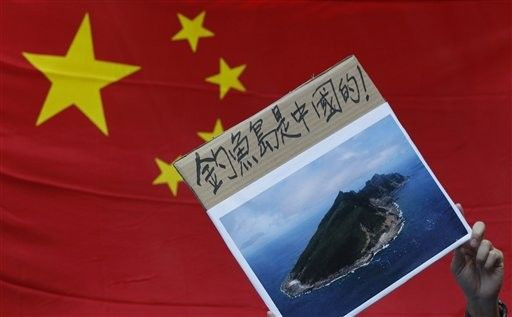China Deploys Martime Surveillance To Island Dispute With Japan
Related: Taiwan pulls Tokyo envoy over East China Sea row

Japan calls them the Senkaku. In China they're called the Diaoyu. The Taiwanese say they're the Tiaoyu; English-speakers call them the Pinnacle Islands.
These uninhabited rocks barely merit a few unnamed spots on Google Maps between Okinawa and Taiwan, but they have become a symbol of a much larger struggle over who controls what waters -- and what mineral, fishing and oil resources lay beneath them -- in the East China Sea.
On Tuesday, after Japan's Cabinet announced it would buy three of the privately held Senkaku islands for $26 million, China announced the arrival of two of its Marine Surveillance vessels in waters just outside the Japanese-controlled area, according to the state-run Xinhua news agency.
Chinese Defense Ministry Spokesman Gang Yansheng lambasted the "nationalization" of the Diaoyu Islands, and accused Japan of repeatedly stirring up trouble over the islands. "We are watching closely the evolution of the situation and reserve the right to take reciprocal measures," Geng said, according to Xinhua.
Taiwan also announced Tuesday it was recalling its envoy, Shen Ssu-tsun, after earlier in the day admonishing Japan's top envoy Sumio Tarui for what it says is a land grab of the Tiaoyutais, and a violation of Taiwan's territorial integrity, according to Focus Taiwan.
Officially, the islands have been under Japan's control since the U.S. transferred administration back to Tokyo following 27 years of post-War administration by Washington. But Beijing says the islands belong to the Republic of China (Taiwan) and, by extension, is part of the greater People's Republic of China.
Control of these uninhabited rocks is part of increasing tensions over control of important shipping lanes that connect the Singapore to the Far East.
In the north, Japan and Russia are disputing the South Kuril Islands, part of a band of islands between Russia's Far East and northern Japan that divides the Okhotsk Sea from the Pacific Ocean. Japan and China are tussling over territorial control in the East China Sea. And in the south, China, Taiwan, the Philippines, Vietnam, Malaysia and Brunei are involved in territorial disputes, particularly in the Spratly and Paracel archipelago.
China is by far considered the powerful hegemon in these disputes as it seeks to expand its maritime presence in an increasingly crowded region.
"China thinks of the South China Sea much as the U.S. thinks of the Caribbean: as a blue water extension of its mainland," wrote Robert D. Kaplan, author and chief geopolitical analyst at Stratfor, in Saturday's Wall St. Journal. "Vietnam and the Philippines also abut this crucial body of water, which is why we're seeing maritime brinkmanship on all sides. It is a battle not of ideas but of physical space."
China is also feeling pressure in the East China Sea, not just because of Japan's efforts to assert itself so close to Taiwan, but also due to the recognition of Taiwan as a sovereign state by the United States, which has a long standing policy that it would defend the island from any military incursions by the mainland.
--
© Copyright IBTimes 2024. All rights reserved.






















